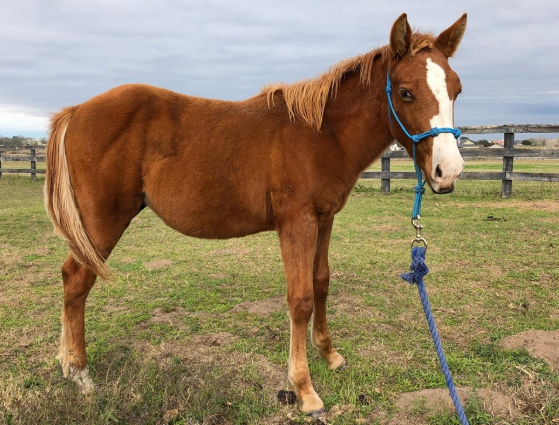
With the current economic climate, there are more “free” or “cheap” horses available than ever before. Owners who can no longer care for their animals are selling horses for far less than they are worth or even giving them away. Equine rescues are filled with unwanted horses that have been turned over for adoption or seized due to neglect or abandonment. This article explores the issues and costs associated with adopting one of these animals and provides an idea of the work and budget required to maintain a horse.
Keeping a Horse at Home Versus a Stable
First, you must consider where you will be keeping your horse. Do you have sufficient property to keep the horse at your home? Do your zoning laws permit keeping horses on the property? If the answer to these questions is yes; then you should consider a secured area in which to keep your horse. Fencing is available in many different forms from solid wooden post & beam construction to double strand electric wire. Do you have a barn or run-in shed in which your horse can seek shelter during inclement weather? Either of these structures provides a location where your horse can move when it is snowing, raining, windy or cold. A little shelter goes a long way towards keeping your animal safe and healthy. Keeping your horse on your own property will require a large initial output for the purchase of fencing and a barn if you don’t already have these set up. However, you won’t have to pay monthly stable fees and will be able to monitor your horse daily.
If you don’t have the ability to keep animals on your property, you need to look for a stable where you can board your horse. It is important to find a stable that will provide a good home for your horse during times when you cannot be present to care for the animal. Some stables have all-inclusive prices that cover the cost of feeding, turn out, blanketing, and cleaning while others charge fees for completing even the smallest request. Be aware that some stables will still require you to come daily to feed, clean and care for your horse. Some advantages of keeping your horse at a stable include not having to construct a corral and barn on your own property; being around other horse owners on a regular basis; and having your horse in contact with other horses thus making them more comfortable at shows and riding events. Stables generally cost more to keep a horse, depending on the accommodations.
Feed
One of the biggest expenses associated with horses is their feed. Horses required daily feedings of hay and grain. An average horse will generally consume at least two percent of its body weight daily. This calculates to approximately 20 pounds of hay or half of a small bale. The hay that you feed should be of good to excellent quality. Old hay sometimes contains mold that can cause respiratory problems often referred to as heaves. The type of horse that you own will also determine the amount of hay required on an annual basis. You should generally budget $2,000 to $3,500 per year to cover feed costs for your horse but keep in mind that these numbers can fluctuate, as the price of hay and grain increases or decreases.
Veterinary Care
Routine care and vaccinations are relatively easy to calculate for your horse. The American Association of Equine Practitioners recommends that all horses receive Rabies, Tetanus, Eastern & Western Equine Encephalomyelitis and West Nile vaccinations annually. If your horse has not previously received these core vaccinations, it will need an initial dose of each followed by a booster approximately four to six weeks later. You may also need a Coggins test completed if your horse is stabled or if you plan on taking it to riding events. The cost of these vaccines and Coggins test generally starts around $125 to $150 per visit depending on your veterinarian’s travel charges and time required to administer the shots. Dental care is another important annual exam that you should schedule with your veterinarian. You should expect to pay a minimum of $100 – $150 per visit for dental exams and floating of the teeth. While these prices may seem steep, treatment of any of these diseases or conditions is far more expensive and does not guarantee a good recovery. You may want to consider these costs as a form of insurance for your horse.
Farriers
Horses require regularly scheduled visits from a farrier or blacksmith. A horse’s hoof is always growing just like your fingernails. However, unlike fingernails, hooves should not be trimmed without training. A farrier has usually trained in the proper methods for removing old horseshoes, trimming the hooves, and fitting new shoes. Some horses require visits as frequently as every six weeks. An estimate for farrier work depends on the frequency of visits and scope of work required to trim the hooves.
Other Costs
There are many other costs associated with owning a horse that you will need to investigate. Some states hold horse owners liable for any damage caused by the animal. For example, if your horse becomes free and causes a traffic accident; you could potentially be held financially responsible. Some insurance companies provide special coverage for horse owners. Veterinary care outside of routine vaccinations and dental exams can be expensive. Supplements for joint conditions, allergies, fly & tick controls also add to the cost of horse ownership. If you want to take your horse to events, shows or simply to ride in a different location; you may need to purchase a trailer or pay someone else to transport the animal. Trailer ownership requires registration, inspection, and maintenance fees as well as a vehicle capable of hauling the load. Tack including halters, leads, blankets and saddles can add other expenses to your budget. There are many sources of used equipment that you can find online or through local clubs. This will permit a new owner to obtain the required supplies without having to purchase brand new equipment.
Summary
All too often we receive calls at our practice from a person who has recently received a “free” horse. While we don’t want to discourage horse ownership; we believe that to be a responsible owner means that you have the means to financially support a horse. This includes anticipating both the expected and unexpected bills. Before you get a horse, spend a little time developing a management plan and budget for your new companion. This will make the time you spend working with your animal more enjoyable.
This article was provided by the doctors of the Granville Veterinary Service, Large Animal of Granville, New York. They can be contacted at 518-642-1676 or we are online at Gvsla.com.
Related Articles & Free Email Newsletter Sign Up
How to Catch a Horse That Runs from You
How to Find the Correct Bit for Your Horse




Comment here